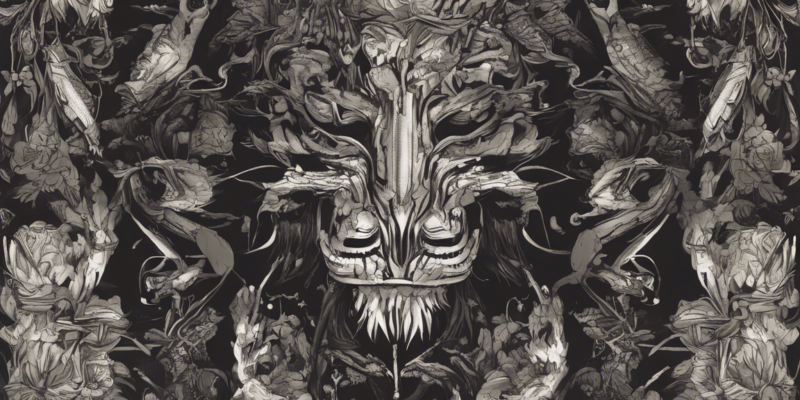Introduction
In the world of interior design, there has been a notable shift in the appreciation for darker natural elements. Traditionally, light and neutral colors have dominated the design landscape, but there is a growing trend towards incorporating dark natural elements to add depth, drama, and sophistication to spaces. From dark woods and stones to matte black fixtures and fittings, this trend celebrates the beauty of natural elements in their raw and undiluted form. In this article, we will explore the allure of dark natural elements in design and provide tips on how to incorporate them into your own space.
Why Dark Natural Elements?
The use of dark natural elements in design serves multiple purposes. Firstly, they add a sense of warmth and coziness to a space, creating a welcoming and inviting atmosphere. Dark woods, such as walnut and mahogany, exude a rich, luxurious feel that can elevate the overall aesthetic of a room. Secondly, dark natural elements add a touch of drama and sophistication. They create a bold statement and can serve as focal points in a room, drawing the eye and adding a sense of intrigue.
Incorporating Dark Natural Elements
When incorporating dark natural elements into your design scheme, it is important to strike a balance to ensure that the space does not feel too heavy or overwhelming. Here are some tips on how to effectively integrate dark natural elements into your space:
1. Contrast with Lighter Elements
One of the key principles in design is contrast, and this holds true when working with dark natural elements. Pairing dark elements with lighter elements creates a dynamic interplay that prevents the space from feeling too monotonous. For example, a dark wood dining table can be complemented by light upholstered chairs, creating a harmonious balance.
2. Use Texture to Add Depth
Texture plays a crucial role in design, especially when working with a dark color palette. Incorporating different textures, such as a plush rug, velvet pillows, or a metallic accent piece, adds depth and visual interest to the space. These textural elements help break up the darkness and create a more layered and dynamic look.
3. Opt for Matte Finishes
When selecting fixtures and fittings for your space, consider opting for matte finishes in lieu of glossy ones. Matte black faucets, lighting fixtures, and hardware have a modern and sophisticated aesthetic that complements dark natural elements beautifully. The matte finish absorbs light rather than reflecting it, which can enhance the overall mood of the space.
4. Embrace Nature
Incorporating living plants into your design scheme can help soften the look of dark natural elements and bring a sense of freshness and vitality to the space. Consider adding a variety of indoor plants with different shapes, sizes, and textures to create a lush and inviting environment. Plants not only enhance the aesthetic appeal of the space but also contribute to a healthier indoor environment.
5. Balance with Light
Proper lighting is essential when working with dark natural elements. Ensure that the space receives ample natural light during the day to prevent it from feeling too dim and cavernous. Additionally, incorporate a variety of lighting sources, such as overhead fixtures, floor lamps, and task lighting, to create a well-lit and inviting ambiance. Lighting plays a crucial role in highlighting the beauty of dark natural elements and creating a warm and welcoming atmosphere.
Frequently Asked Questions (FAQs)
Q1: Are dark natural elements suitable for small spaces?
A1: Yes, dark natural elements can be incorporated into small spaces. To prevent the space from feeling too cramped, opt for dark elements strategically and balance them with lighter colors and ample lighting.
Q2: How can I incorporate dark natural elements into a predominantly light-colored room?
A2: You can introduce dark natural elements through furniture, accessories, and accents. Consider adding a dark wood coffee table, a matte black light fixture, or a stone accent wall to create visual interest and contrast.
Q3: What color palettes work well with dark natural elements?
A3: Dark natural elements pair well with a variety of color palettes, including warm neutrals like beige and taupe, jewel tones like emerald and sapphire, and even bold hues like mustard yellow and deep plum.
Q4: Are dark natural elements suitable for all design styles?
A4: Yes, dark natural elements can be incorporated into various design styles, including modern, industrial, Scandinavian, and rustic. The key is to balance the dark elements with complementary materials and finishes.
Q5: Can I mix different types of dark natural elements in the same space?
A5: Yes, mixing different types of dark natural elements can create a rich and layered look. For example, you can combine dark wood furniture with black metal accents and stone countertops for a cohesive and harmonious design scheme.
In conclusion, the use of dark natural elements in design adds depth, drama, and sophistication to a space. By following the tips outlined in this article and being mindful of balance and contrast, you can effectively incorporate dark elements into your design scheme to create a stylish and inviting home environment.



Comments